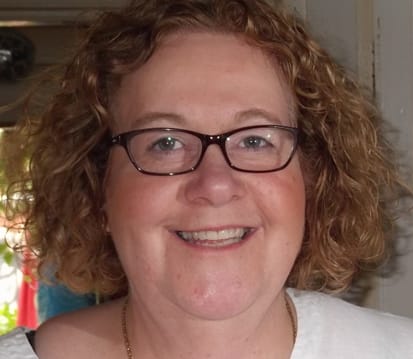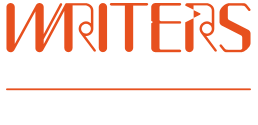
Writers Victoria sat down with Clare Allan-Kamil to get her take on the art of synopsis writing.
As the synopsis is the first example of your writing an agent, editor or publisher sees, it’s vital to get it right – if they don’t like your synopsis they might not bother to read your sample chapters. As daunting as it seems, there are tricks and tools you can use to make your synopsis stand out.
With over 25 years’ experience in the industry, Clare has plenty of advice to help us break down the art of the dreaded synopsis.
Why do publishers/agents need to see a synopsis? Can’t they just read the submitted novel?
You are asked to submit a synopsis because the commissioning editor (or equivalent) will assign the reading of your manuscript according to the genre. They’re matchmakers who like to ensure that the right person reads your work. So they will give a literary manuscript to an editor who specialises in the literary genre and a crime manuscript to an editor who specialises in crime (because you don’t want someone who specialises in cookbooks assessing your historical fiction). Commissioning editors do not have time to read your entire manuscript in order to decide who best to assess it. A synopsis allows them to sort manuscripts quickly and effectively.
Secondly, publishing houses receive countless manuscripts on a weekly basis; sadly, they do not have time to read every one. A synopsis is a quick and effective way for them to sort through which manuscripts are worth their limited time.
Lastly, if you as the author can’t explain what it is that you’re writing about in one to one-and-a-half pages then the book is likely to be just as rambling and unstructured. In a way, publishers are forming an understanding of you from the very first paragraph of the synopsis – do you know what you’re writing about, can you succinctly explain your work to others, do you know about structure?
Why do you think it is so important to get the synopsis right?
The synopsis is your novel’s flagship. It provides the assessor with a profound first impression of your work and you as a writer. So your synopsis must be clear, it must show that you understand what it is that you’ve written and must demonstrate a solid understanding of your readership and the market.
As editors have less and less time to spend trawling through the slush pile they need the synopsis to help determine: where your book sits in the market, who the readership is, what genre of book it is and what it’s about. And they need it done five minutes ago!
Also, a publisher needs to know that the person they are considering giving a publishing contract to is cogent and clear about their writing. A publisher can’t afford to have an author incapable of speaking about their book at book launches, in interviews and at festivals.
Importantly for the author, a synopsis can help focus your work – it’s a great way to check if your structure is sound, if there are any lulls in the action, or if your characters have a weak emotional arc. In this way, the synopsis is a blueprint – an architectural plan – for your novel. It’s not just for your pitch; it provides a structure as you’re writing. It’s a good idea, therefore, to write a synopsis at the beginning, the middle and the end of your writing process.
It’s important to realise that you can have a fantastic book that will languish in the slush pile simply because the synopsis didn’t sell the quality of the book well enough.
What are your top tips for writing a good synopsis?
1. Engage immediately
You absolutely have to engage the reader in the first two lines as well as capture who you’re writing for. You can, for some kinds of books, start with a question derived from the thesis of the book. For instance, for a non-fiction submission about starting up a small business you wouldn’t say ‘this is a book about small businesses’ (because that would be dull). However, you might start with a question: have you ever considered opening your own business? Are you tired of working for other people? This kind of opening is already informing the assessor that you know who your audience is and you know how to engage their interest quickly. Also, bring to the fore a sizzling quote and place it straight after the introduction. This will also help with immediate engagement.
2. Your tagline needs to be perfect
The tagline for your book needs to come at the very beginning – a succinct and captivating sentence that sums up your book’s thesis, audience and uniqueness to the market. It’s worth spending a lot of time crafting this one sentence. You need to find the sentence that makes the reader go: oh, that’s interesting, I’ll read on. Revise your tagline until it’s perfect. This will take time.
3. Choose your comparison titles carefully
At the end of the synopsis, it’s a great idea to link your writing to comparable titles. When doing this think carefully about who to compare yourself and your work to. If you compare your work to Margaret Atwood but you actually write spy fiction in the vein of John Le Carré, this does not reflect well on your understanding of the industry, of genres and your own writing. If you are lucky enough to have a publisher contact you, they are going to want you to talk about why you liken your work to Margaret Atwood. If you listed her because you thought it would look good but you’ve never actually read her, this will not go down well. Be honest and do your research.
Is there a perfect structure for a synopsis?
A perfect structure involves getting to the point quickly, giving an indication of the audience early on and keeping it brief. No matter what, your synopsis should never exceed the publishers’ requirements on length: if a publisher asks for a one-page synopsis then they mean one page. In particular, the character arc should be made very clear in the synopsis – how does the main character/s change over the course of the novel? What do they learn?
How long should a synopsis be?
Ideally a synopsis should be kept to a minimum but different publishers have different requirements. Some publishers want a three-page synopsis while others only want half a page. Stick to what the publisher asks for. It’s a good idea to have more than one synopsis prepared, from a single paragraph to six pages.
What’s the difference between a synopsis and a blurb?
The blurb needs to reveal the highlights of the plotting, or the key themes. The blurb teases the reader and gives them a broad sense of the story, leaving it tantalisingly unfinished. The reader should have no choice but to open the book and begin reading, desperate to find out what it’s all about. The blurb is often derived from the synopsis but the blurb is purely a selling tool. By comparison, the synopsis is a selling tool but it’s also all the other things we’ve been talking about: a time-saver; an indication of intended audience and your book’s position in the market, and your quality as a writer; key plot points succinctly explained etc. The most important difference is that a synopsis must give away all significant plot details including how it ends while a blurb should never give away the ending.
Any tips for making a synopsis stand out?
Publishers don’t want to see quirky fonts, a kaleidoscope of colours and pictures (unless you’re an illustrator and you’re submitting a picture book – in that case, draw away!), designs for the front cover, or glowing quotes from your best friend, hairdresser, niece or grandma (unless your grandma is a Miles Franklin winning author – in that case, quote away!). Your synopsis doesn’t need to have gimmicks, it just needs to be succinct and immediately engaging. Find the human element in your story that readers will identify with, the thing that touches the central nerve, and put it right up the top of your synopsis.
Does the genre of a book affect the synopsis? For example, is there a certain way to write a synopsis for a crime novel that might not suit a literary novel?
It’s all much the same. Some genres lend themselves to opening with the character (versus the themes). A synopsis is more about the mechanics of the book – revealing what makes the book tick – so in that sense the genre is evident in the structure itself. For example, crime novels often use the discovery of the first dead body as the inciting incident and have plenty of twists and turns. Of course, the genre will also be evident in any quotes you use and your sample material (so choose sample chapters carefully).
About Clare Allan-Kamil
Clare Allan-Kamil has worked with writers, performers and artists as a mentor and facilitator for 25 years. She believes that the relationship formed between a mentoring editor and a writer is a delicate balance of understanding, trust and tact. Clare has edited numerous authors in a range of fields and loves the process of seeing a work develop and go into print.
